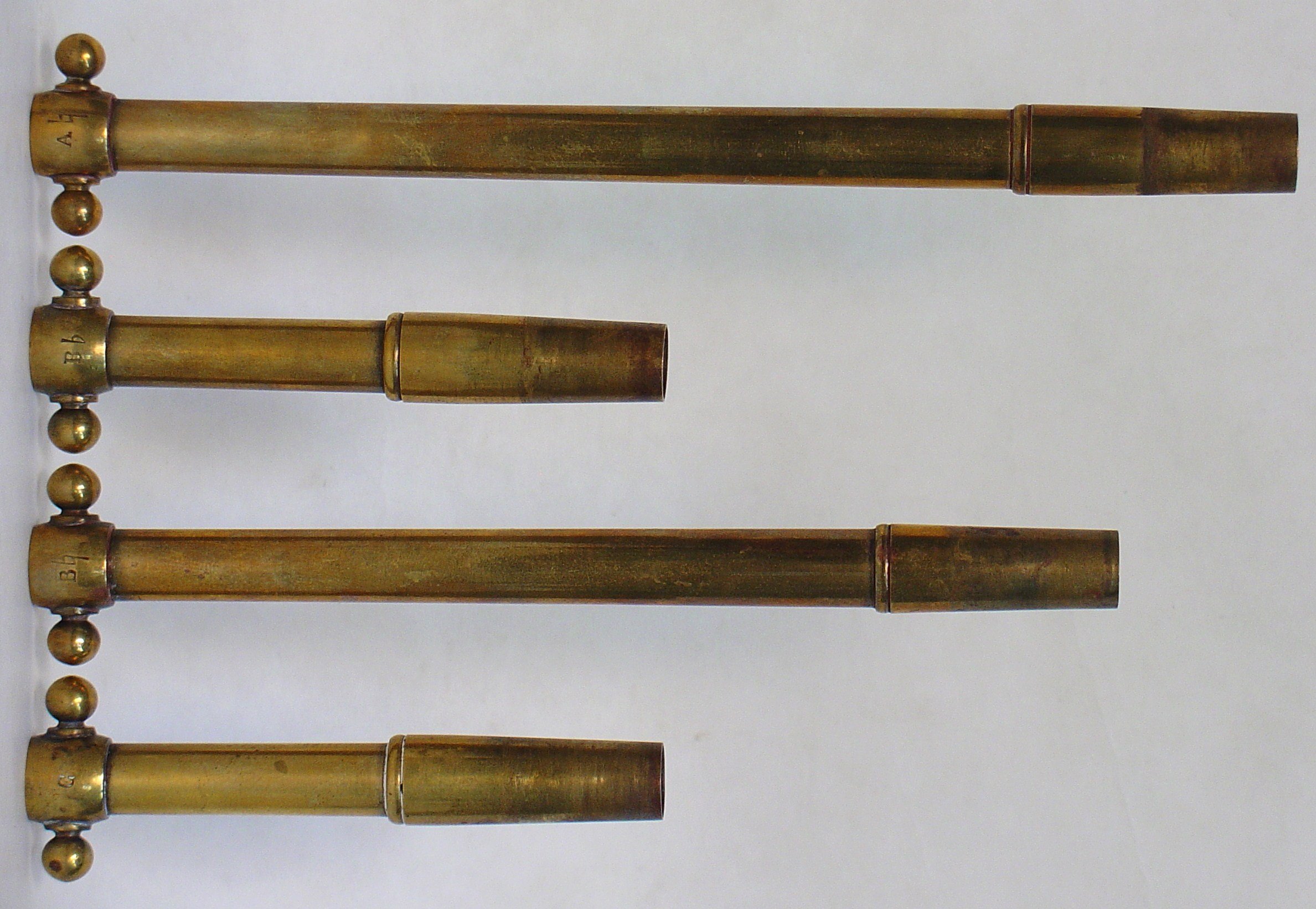Besson Echo Cornet
This is another instrument from Boyde Hood's collection. Boyde generally acquires instruments that he can use in performances including recitals and master classes. I don't think that he has had much call for this one, although it is an excellent playing instrument for when he might need an echo cornet and in a variety of keys as well.
It was made by Besson in London about 1878 (when still under French ownership) and retailed in New York City by Louis Schreiber. This is the same Schreiber that had previously run a factory that built a whole line of brass instruments in New York. The shape of the echo bell is very similar to most other makers of such devices (see Reidl Echo Cornet for a different variety).
Click on image below for larger view.
Besson, in both Paris and London, seemed to have made more of these than other makers judging by those that have survived, although they are still rare and highly sought after by collectors. Most of these Besson Echo cornets are built in C, the same as this one. My guess is that the largest demand was in the amateur market, where they might be played in the parlor, accompanied by the piano, as well as in the brass band.
This cornet is remarkably well preserved, never needing any sort of restoration and still retains all its original box and parts excepting the mouthpiece (the mouthpiece shown is a slightly later Besson). It is interesting to study the slides, shanks and crook that are provided. With the mouthpipe shank marked "C" and the two tuning slides, it is in high or low pitch C. Using These slides with the tuning slide extension, it can be played in high or low pitch Bb. Low pitch Bb is illustrated in the photo below.
Surprisingly, it has a separate mouthpipe shank for Bb even though careful measurements indicate that it is the same as the C shank (photo below). There is also a shank for B natural, which would lower the cornet with the C slides to that key. I don't recall ever seeing this specific shank on a cornet before. It also has a shank for A and a crook for Ab, which are very common in cornet kits from that time. The first and third valve slides are marked for the position for each respective tuning.
Another example, also from the 1880s, is seen in the photos below. This cornet, in Steve Ward’s collection, has seen more typical wear and then abuse, and then extensive restoration. It is the same model as Boyde’s, with a much more deluxe finish, but lacks the B natural shank. Notice the shorter, flatter high pitch tuning slide crook. It can be tuned to B natural with the combination of that slide with the A shank.
One last example, belonging to Marc Caparone, is the earliest of the three. Steve Ward asked me if there were any echo cornets made by Besson in Paris. I don’t know of any, but this one is from the 1860s when the were stamped with both London and Paris. It originated in London, based on the royal coat of arms.














